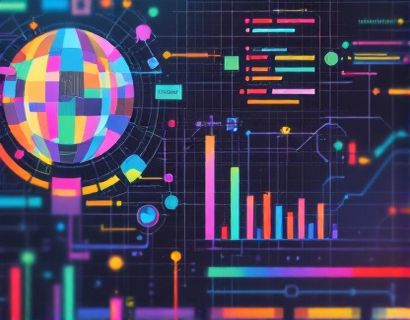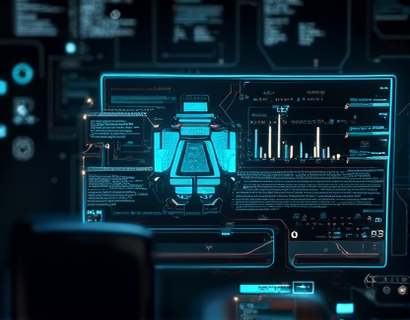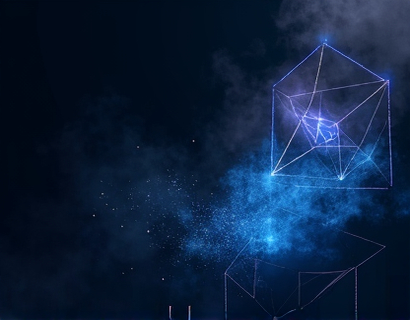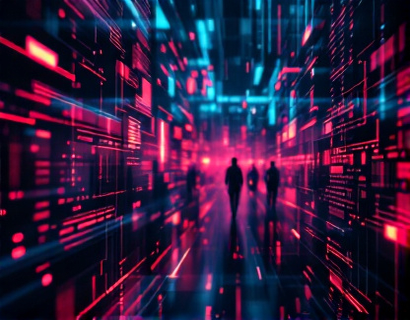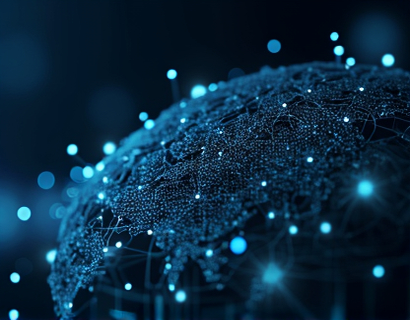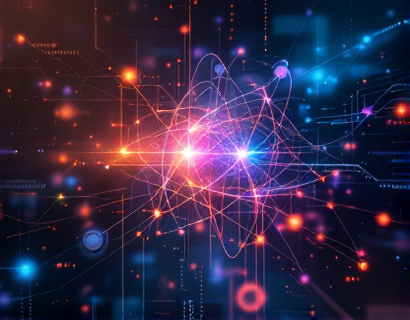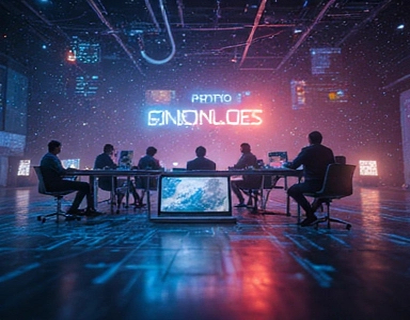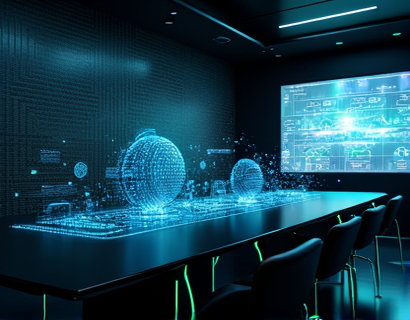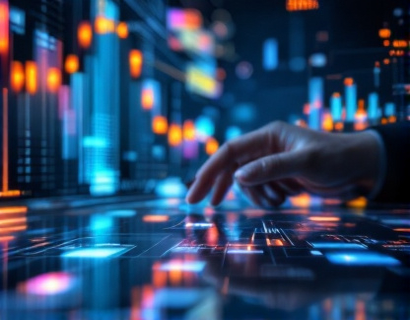AI and Crypto: Pioneering a New Era of Digital Productivity
The intersection of artificial intelligence (AI) and cryptocurrency is giving birth to a revolutionary landscape that is transforming the way we approach digital productivity. This fusion of technologies is not just a trend but a fundamental shift in how we interact with digital tools and platforms. For tech enthusiasts and early adopters, understanding this synergy is crucial as it promises to redefine efficiency, enhance workflows, and unlock new possibilities in the digital realm.
The integration of AI into cryptocurrency and blockchain technologies has opened up a myriad of applications that were once the stuff of science fiction. From smart contracts that execute automatically based on predefined conditions to decentralized finance (DeFi) platforms that offer traditional banking services without intermediaries, the potential is vast. This article explores how these next-gen innovations are maximizing digital productivity and what this means for the future of work.
Enhancing Workflow Efficiency with AI-Powered Crypto Tools
One of the most immediate benefits of combining AI with cryptocurrency is the enhancement of workflow efficiency. AI algorithms can analyze vast amounts of data in real-time, providing insights that help users make informed decisions quickly. In the context of crypto, this means better investment strategies, risk management, and portfolio optimization. AI-driven trading bots can execute trades based on complex algorithms, reducing human error and increasing the speed of transactions.
For instance, AI can predict market trends by analyzing historical data, news sentiment, and other relevant factors. This predictive capability allows users to act swiftly, capitalizing on opportunities before they pass. Moreover, AI can automate routine tasks such as monitoring multiple crypto exchanges, managing wallets, and executing arbitrage strategies, freeing up time for more strategic activities.
Smart Contracts: Automating Trust and Transactions
Smart contracts are a prime example of how AI and crypto are merging to streamline processes. These self-executing contracts with the terms directly written into code eliminate the need for intermediaries, reducing costs and increasing transparency. In a business context, smart contracts can automate payments, verify identities, and ensure compliance with regulatory requirements.
For example, in supply chain management, smart contracts can track the movement of goods from origin to destination, ensuring each step is completed as agreed. If a condition is not met, the contract can trigger alerts or even halt the transaction, preventing fraud and errors. This level of automation not only speeds up processes but also builds trust among parties who may not fully trust each other.
Decentralized Applications and Productivity Tools
Decentralized applications (dApps) powered by blockchain technology are redefining productivity tools. These applications run on a distributed network, ensuring that no single entity has control, which enhances security and reliability. AI can further enhance dApps by providing personalized experiences and predictive analytics.
Imagine a productivity suite where tasks are managed decentralizedly, with AI handling the optimization of workflows based on user behavior and preferences. Such a system could suggest the best times to focus on certain tasks, predict potential bottlenecks, and even recommend resources or tools to improve efficiency. This level of customization and intelligence is a game-changer for individuals and teams looking to maximize their productivity.
Enhancing Security with AI and Crypto
Security is a paramount concern in the digital age, and the combination of AI and crypto offers robust solutions. AI can detect and respond to threats in real-time, identifying patterns that indicate potential security breaches. In the crypto space, this means better protection against hacking, phishing, and other cyber threats.
Blockchain's inherent security features, such as immutability and transparency, are further strengthened by AI-driven security measures. For instance, AI can monitor blockchain activity to identify unusual patterns that might signal a 51% attack or other malicious activities. This proactive approach to security ensures that digital assets and sensitive information remain safe, fostering greater confidence in using these technologies for productivity purposes.
Accessibility and Inclusivity in Digital Workspaces
The fusion of AI and crypto is also making digital workspaces more accessible and inclusive. Traditional financial systems often exclude individuals in underbanked regions, but crypto and AI-driven financial services can provide them with the tools they need to participate in the global economy. Decentralized finance (DeFi) platforms, for example, offer lending, borrowing, and trading capabilities without the need for a traditional bank account.
AI can further enhance this inclusivity by providing language translation services, making crypto and blockchain technologies accessible to non-English speakers. Additionally, AI-powered accessibility tools can assist individuals with disabilities, ensuring that everyone has equal access to the benefits of these technologies. This democratization of digital tools is a significant step towards a more equitable and inclusive digital landscape.
Challenges and Considerations
While the potential of AI and crypto in enhancing digital productivity is immense, there are challenges that need to be addressed. Regulatory uncertainty remains a significant hurdle, as governments worldwide are still grappling with how to regulate these emerging technologies. Compliance with varying regulations can be complex, and businesses must stay informed to operate legally and ethically.
Another consideration is the technical complexity involved in integrating AI and crypto solutions. Not all organizations have the expertise in-house to implement these technologies effectively. Collaboration with tech experts and adopting a gradual, strategic approach can help mitigate these challenges. Education and training are also crucial to ensure that users can fully leverage the benefits of these innovations.
Future Prospects: The Next Frontier
The future of AI and crypto in digital productivity is bright, with numerous exciting developments on the horizon. One area of interest is the integration of AI with quantum computing, which could exponentially increase computational power and solve problems currently beyond the reach of traditional computers. This synergy could lead to breakthroughs in cryptography, optimization, and data analysis, further enhancing productivity.
Another promising development is the rise of Web3, a decentralized internet built on blockchain technology. Web3 has the potential to create a more open, secure, and user-controlled web, where data ownership and privacy are prioritized. AI will play a crucial role in managing and optimizing Web3 ecosystems, ensuring they are efficient and user-friendly.
In conclusion, the fusion of AI and crypto is not just a technological advancement but a transformative force that is reshaping the digital landscape. For tech enthusiasts and early adopters, embracing these innovations can lead to unprecedented levels of productivity and efficiency. As these technologies continue to evolve, the possibilities for enhancing our digital lives are limitless.



